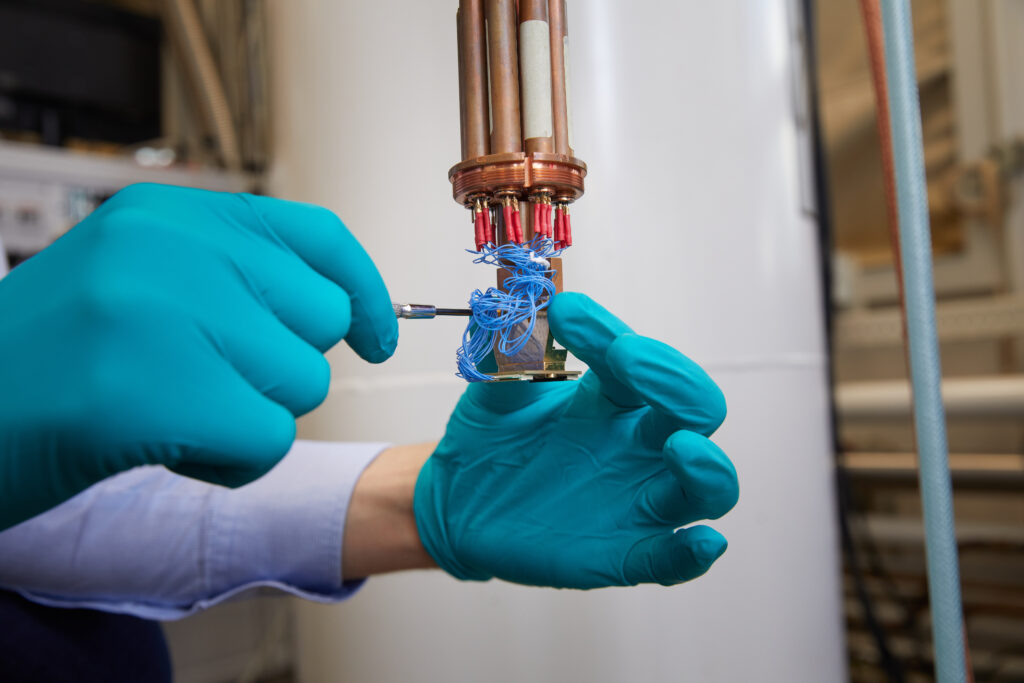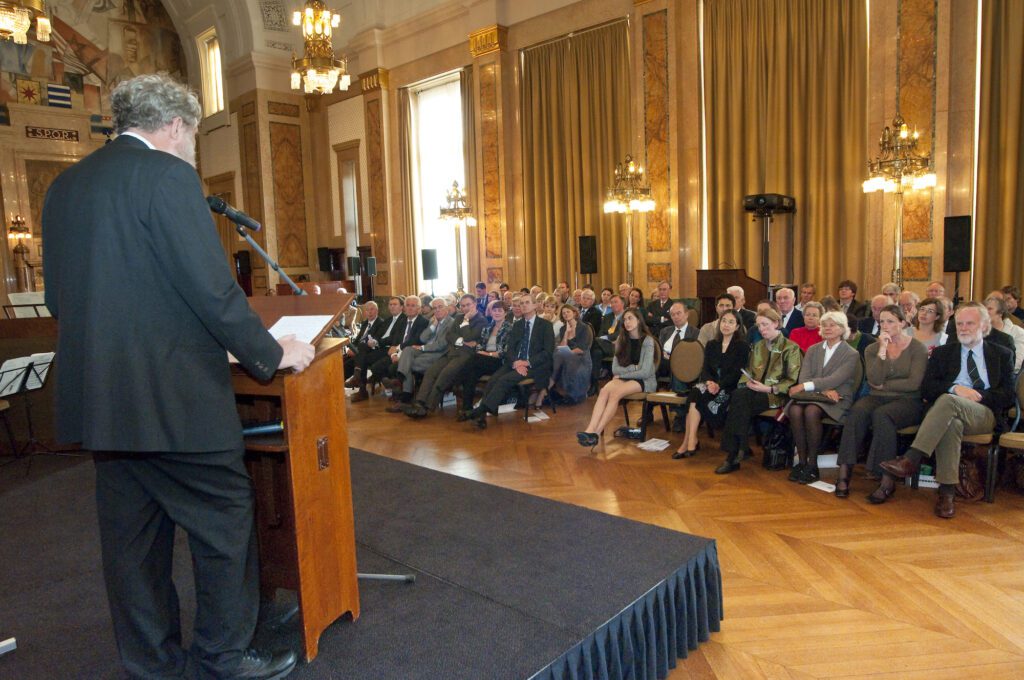21.08.2023Qubit Research
Pairing up equal-spin electrons in a two-dimensional platform

Researchers from QuTech have used a versatile new platform to demonstrate excellent control over the interactions between spatially separated electrons. This has important implications for the study of quantum entanglement and marks a significant step towards realising a topological qubit. The researchers published their results in Nature Communications.
Superconductors at low temperatures host unique pairs of electrons known as Cooper pairs. These electrons are entangled, which means that the electrons can ‘feel’ each other, even when they are taken far apart. Cooper pairs in naturally occurring superconductors are typically composed of two electrons with opposite spin. Creating a system that can pair up electrons with equal spin lays the groundwork for constructing topological qubits, which are promising building blocks of a future quantum computer.

Left: Schematic of quantum dot – superconductor hybrid devices created in a two-dimensional electron gas (2DEG). Right: Scanning electron microscope image of the device.
Equal spins in a two-dimensional system
Previous research at QuTech—a collaboration between the TU Delft and TNO—has shown that it is possible to create equal spin pairing by combining a standard superconductor with quantum dots in a one-dimensional semiconducting nanowire. However, in order to perform more advanced experiments, it is important to go beyond a one-dimensional platform to enable scalability and flexibility in device design. A two-dimensional electron gas (2DEG) is such a material platform. The 2DEG can be pictured as a material sandwich that confines electrons in a thin 2D layer. Importantly, researchers showed that the special semiconductor properties in the 2DEG leads to an exceptionally large equal-spin pairing between the quantum dots. Furthermore, the strength of this interaction can be precisely controlled using magnetic fields. These observations provide crucial experimental benchmarks. They establish 2DEGs as a new scalable and flexible candidate for on-chip entanglement studies and for the realisation of topological qubits based on chains of quantum dots interacting via superconductors.
Publication details
Wang et al., Triplet correlations in Cooper pair splitters realised in a two-dimensional electron gas, Nature Communications 14, 4876 (2023).

